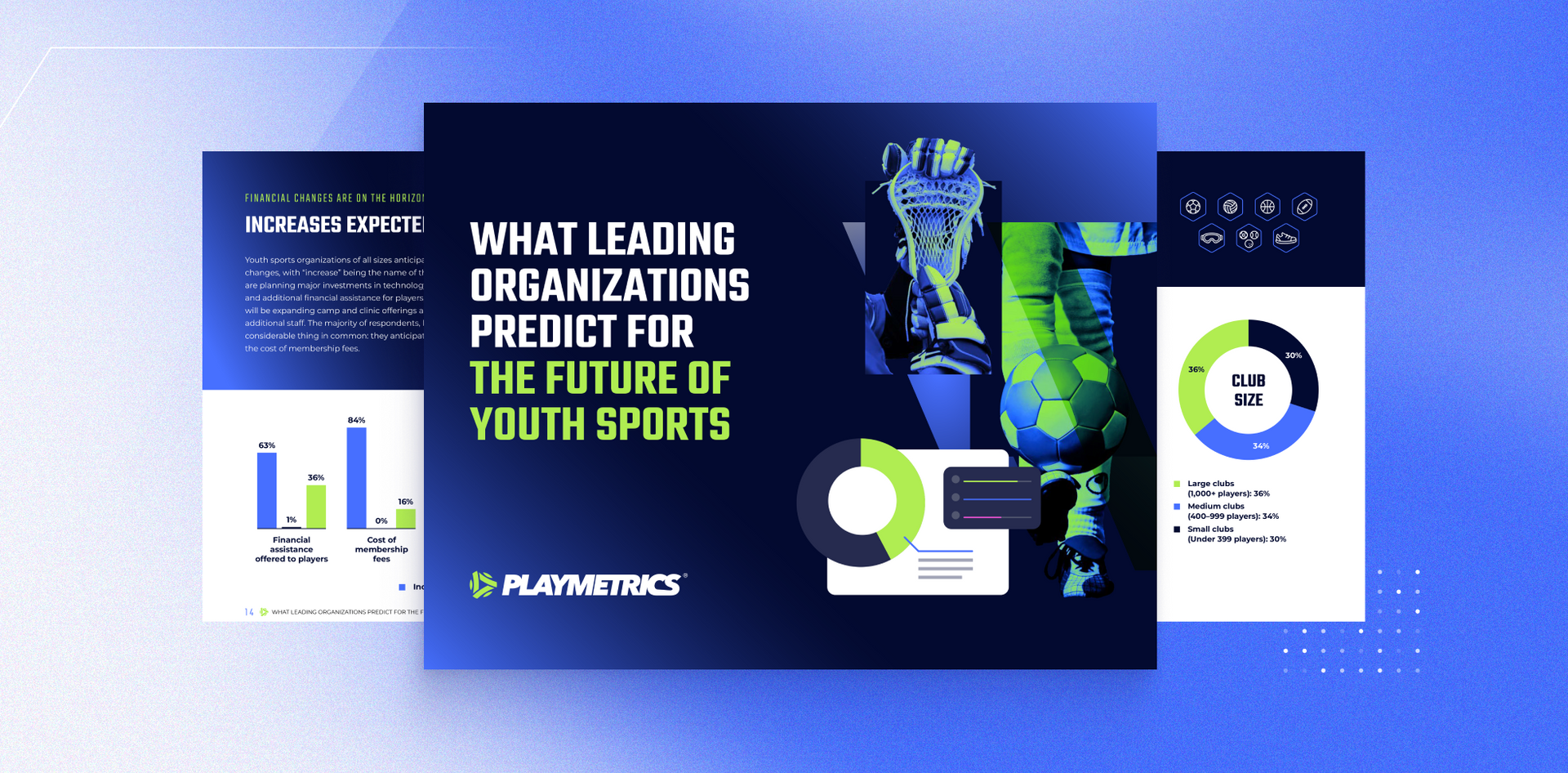With direct influence over North Carolina FC’s professional team and youth programs, John Bradford finds himself in a unique position.
“I think that more clubs are starting to look internally to find who is going to support their perspective of player development, and more importantly, who can bring it to life. You need someone leading the charge who can manage both worlds – reinforcing the vision and doing the work. If you say you want to promote youth development, you need to find someone who is dialed in and connected to the youth program, or else you’ve shut down your entire player development movement before you begin."
As the head coach of NCFC and Academy Director for NCFC Youth, Bradford’s presence alone represents an opportunity to strengthen the bridge that connects the two. But not all player development pathways are created equally, and that’s where we begin.
Start with what you have
There are two key pieces of the player development puzzle that need to be considered before anything else: club environment and player ambitions, each characterized in their own way.
“Defining player development as one singular concept is impossible. There are so many distinct types of players and environments to consider. The first thing that you have to answer for yourself is: What is your point of view on the game and player development? And then look around and see how your club environment meshes with that view. If you say you want to develop pro players but your club caps at U10 soccer, that vision doesn’t make much sense. You need to be brutally realistic about where you are now as a club while working toward that outlook of where you want to grow. From there it becomes much more tailored to the individual, on and off the field. What is the player’s background? What is their outlook of what they want to accomplish?”
In other words, context matters. Resources matter. Expectations and mindsets matter. Having a realistic view of your club’s strengths and weaknesses is the foundation of a player development philosophy that can both promise and deliver. Success lies in your ability to leverage the tools and know-how at your disposal to create a clear structure in which players of varying backgrounds can excel. “Your club members have to understand what it is that you’re trying to accomplish. Different players can have different outcomes of what their development will look like. Ultimately the intention is to provide a home and a good environment for players at all levels and then manage their growth within that environment.”

Player development is never finished
Player development, by its very nature, is defined by movement. And, movement, by its very nature, creates change. Progress, setbacks, call-ups, modified playing time, new teams, unfamiliar formations. The ability to become comfortable with change, with accepting discomfort, even momentarily, is imperative to a valuable player development experience. That means everyone from directors to parents needs to get on board with change. “As leagues have changed, the U.S. Soccer Development Academy goes away, new types of events continue to pop up…Opportunities are evolving, and we try to match that in what we offer. We want to put players into unique situations, even globally, for development through matches and competition.”
Jerry Seinfeld once joked that “Marriage is like a game of chess, except the board is flowing water and the pieces are made of smoke.” Swap out “marriage” with “running a youth soccer club,” and the point remains just as clear. As John states, “Any time there is change, there will be some confusion. It takes steady, behind-the-scenes communication amongst coaches and directors to make sure that we’re managing all the various players within our programs as things constantly fluctuate. We put this in play during COVID through the constant stream of change we all wrestled with. Our leadership came together with new ways to manage, new ways to discuss curriculum and share individual player programs. Player development is never done. It’s a moving target.”
Serving both the club and the individual player
“I use the words ‘outcomes and pathways’ a lot because each individual is different and each development plan needs to reflect that. Some players may want to be part of the youth national team system, which might be realistic for one group, but not for another. Communicating that and educating them on the selection process is important. It’s the same with college recruiting. You sit down with the player and their family, they come up with a list of three schools, the top three schools in the country, and they say, ‘This is where we want to go.’ It might not be realistic.”
Player development means achieving whatever that player’s goals are relative to their ability level. For some players, it could be making the middle school team in addition to their club team. It could be making the high school team or moving up from Team C to Team B. It could be staying on Team C.”
It all comes down to defining an individual player’s ‘exit strategy,’ the goal he or she is hoping to attain. Are the parents bought into that? If there’s alignment within the family, then it’s on the club, the directors, and the coach to also be aligned. Is the player’s goal achievable within the framework of the overall development philosophy? Are there the right resources on the ground to support that goal? If so – and that’s always the aim – then it’s full steam ahead.”

Good communication increases clarity and buy-in
It all starts with sharing the club’s methods for player development internally so the entire staff is on the same page and everyone understands the role they play. We need to be upfront about what’s expected and allow staff to provide feedback on what’s working and not working. A formal and ongoing coach evaluation process has been really important for us at NCFC. Similar to the individual player development plan, a coach development plan pushes us to have an open dialogue and more accountability. We’ve got a great staff at all levels within NCFC, so bringing everybody together and taking the time to have real conversations about how we view the game, work through disagreements, and provide clarity is important. Our rule of thumb is: As long as a coach can tell us why they think something should be done a certain way, then it’s open for discussion.”
A good thing about having been in the same youth club for a while, for a lot of us, is that we’ve seen documents, books, and guides about player development get created and then thrown on a table never to be used. So we recognize how critical it is to connect with our staff to get a clear understanding and buy-in with consistent checkpoints throughout a season to really bring a player development philosophy to life.”
Once club staff is on board, the focus is on communicating the vision, tactical approach, and expectations to club members. “We all know that expectations from players or parents might not always mesh with the coaches’ visions and thoughts. Having constant dialogue throughout the season with players and parents might not save you from uncomfortable situations and conversations, but I think it does lead to making better, more informed decisions.”
Working with the Academy Program at NCFC, my main objective is to communicate to our families what opportunities players will have, give them the substance of seeing players training up for opportunities, and ultimately carve out what we can do and how that goes hand-in-hand with that individual player’s development. Being direct and honest with families is crucial in any player development system.”

Trust the [imperfect] process
Communicating the player development strategy to players and parents is one thing. Getting them to see, believe, and trust in it is often the hardest part.
“I think the first thing for players and parents to understand is to trust the process, which is much easier said than done. As clubs, we have to be approachable and specific in the information we share. Families understanding the amount of effort and detail that goes into managing their player in our environment is an important step for everyone. I can reference a technical framework to a player or a family and they have no idea what that is. They just want it to be something good.”
Trusting the process also means that it’s an imperfect process and that sometimes players are not going to get exactly what they want, or honestly, what they should. Staying true to the approach and communicating alongside the parents and players is what makes it work."
The Blueprint: “This is who we are and how we do it”
“This is my 15th year at NCFC, and within that time we’ve had seven different curriculums. I share an office with Sean Nahas, who’s our Girls Academy Director and Head Coach with NC Courage. He’s been here 16 years. Paul Forster, our Director of Soccer, has been here quite a while, and then Tom Harris joined us about four years ago with a great background in youth development. The four of us have taken our experiences and are working alongside our dedicated full-time NCFC Youth staff to establish a new technical framework, a blueprint, if you will, of how we want the club to go forward. A large part of it is coach accountability, making sure we’re on the same page in terms of curriculum and what we’re teaching our players at various ages.
We want a clear, distinct proposal that covers the bases of what we want to establish:
- What is our club pathway?
- What is our club style of play?
- What is the expectation of each program?
- What are the attributes of an NCFC player, and what does that mean physically? What does that mean mentally? What does that mean tactically, technically?
- What environment should a coach provide for player development, from top to bottom?
- How do coaches learn and what is our expectation of how they use technology?”
John graciously let us take a peek at NCFC’s technical framework, a sixty-seven page document that offers remarkably deep insights into the psychology behind running a successful player development program. It is a thorough and thoughtfully crafted manifesto titled Building Lighthouses.
Why a lighthouse? Lighthouses are a symbol of strength; they’re a guiding light in the darkness and always looking out for the people around them. They’re built to last; strong and resilient. They’re focused, reliable, and always ready to help. They do not complain, nor crumble under pressure. They instead stand tall and ready to act. When graduating from our club, players should be equipped with all the tools and education to make a positive contribution to society and future generations. They are the lighthouses of their environment, and we strive to build every day. To do this, we have four pillars of development that house what we believe are the required qualities and characteristics to build a lighthouse.

Building Lighthouses emphasizes developing both the person and player through four pillars: Social Behaviors, Mindset Behaviors, Soccer Actions, and Movement/Fitness/Health. It is structured into key sections that cover:
- Our Identity
- Our Development Approach
- Our Way of Playing
- Our Staff
- Our Teaching Approach
- Our Curriculum
- Research & Resources
The purpose of this document is to outline the structure and details that guide all player and coach development at our club. The document aims to ensure an aligned, consistent, and collaborative approach to enhancing our players’ quality and experience. The intention is to provide concise details covering the most critical aspects of human growth and player development. The content within this document has been created with current research and expert advice into human and player development strategies. Our aim is to be objective and to refresh the content included as new research emerges. Staff are encouraged to know the contents of this document to ensure a clear understanding of the role we play in the community, the standards and expectations that are upon us, and the approach we have to developing exceptional people and players (Building Lighthouses). I’d again like to give praise and credit to the NCFC Youth full-time staff that are on weekly calls for quality discussions and debates on how we continue to tweak this working document and make it ‘ours.’
“Every club may not have or need something as exact as ours is, and I’m sure there are clubs out there that are more detailed to varying degrees. But I think most clubs that are looking at player development and club vision the right way are coming up with similar plans that they can point to and say, This is who we are and how we do it.’ “
Recent Posts





